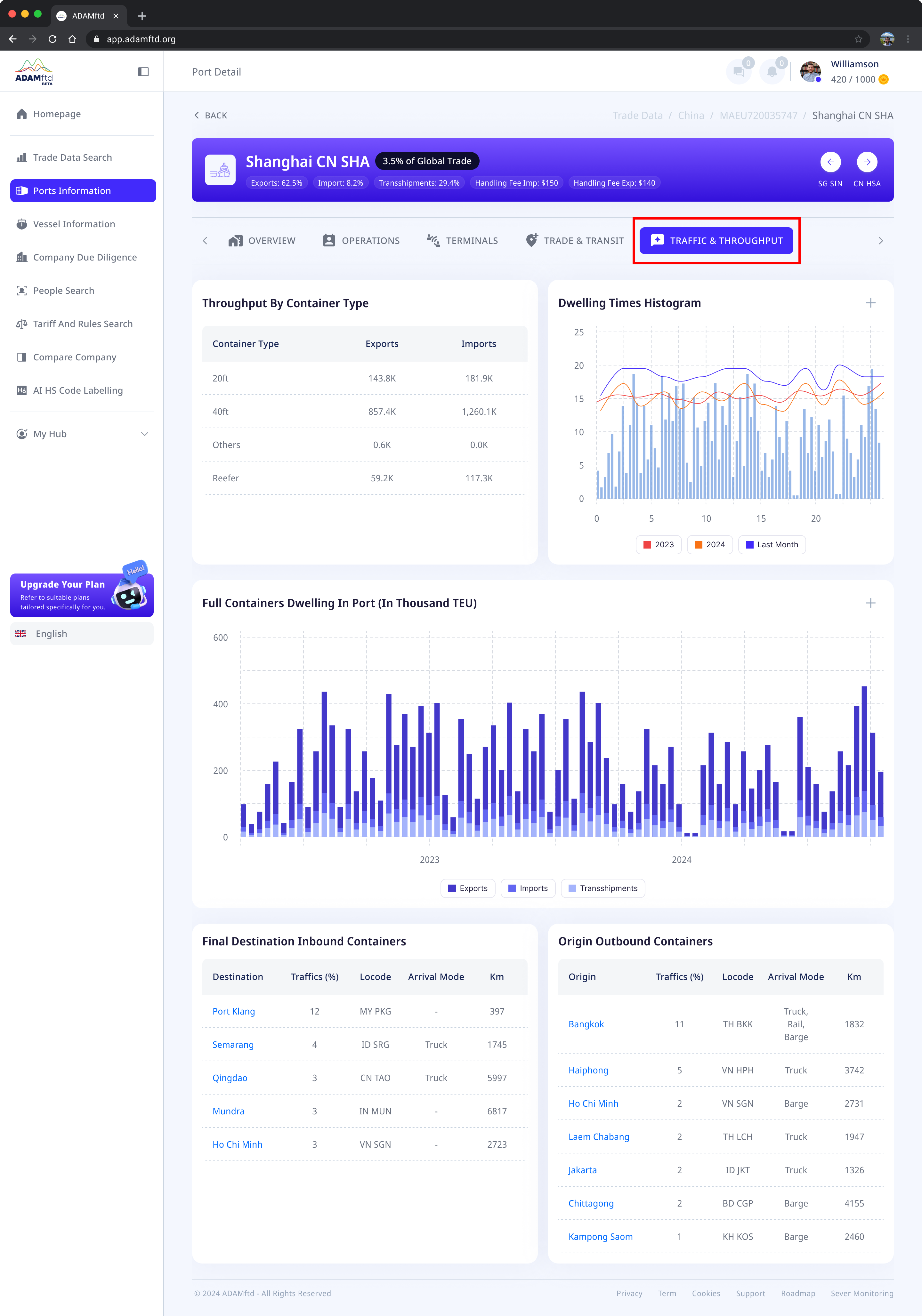By breaking down data on container types, inbound and outbound destinations, and dwell times, this feature offers valuable insights into port traffic, efficiency, and trade dynamics. It is an essential tool for logistics professionals, shippers, and businesses seeking to optimize their supply chain and monitor port performance.
This article explores the Traffic & Throughput feature, detailing its components and how it can support effective decision-making in global trade.

1. Throughput by Container Type
- A breakdown of container throughput categorized by type:
- 20ft containers: Export and import volumes.
- 40ft containers: Export and import volumes.
- Reefer containers: Temperature-controlled containers used for perishable goods.
- Other containers: Non-standard container types.
Importance
- Provides insights into the types of containers most frequently handled at the port.
- Helps businesses identify container preferences and plan shipments accordingly.
2. Dwelling Times Histogram
- A histogram showing the average dwell times of containers (in days) in the port.
- Includes historical trends from the current year, previous years, and the last month for comparison.
Importance
- Highlights how long containers remain in the port before being moved.
- Helps identify inefficiencies or bottlenecks in port operations.
- Enables businesses to plan better and avoid delays in cargo movement.
3. Full Containers Dwelling in Port
- A graphical representation of full containers stored in the port over time, measured in TEUs.
- Categorized by:
- Exports.
- Imports.
- Transshipments.
Importance
- Tracks the volume of full containers awaiting processing or transfer.
- Helps businesses understand port congestion and plan shipments accordingly.
4. Final Destination of Inbound Containers
- Lists the top destinations for inbound containers leaving the port.
- Includes:
- Destination name and locode.
- Traffic share (%).
- Mode of arrival (e.g., truck, rail, barge).
- Distance to the destination (in kilometers).
Importance
- Identifies key markets and supply chain routes for inbound cargo.
- Helps businesses understand the port’s role in their end-to-end logistics.
5. Origin of Outbound Containers
- Lists the main origins of outbound containers arriving at the port for export.
- Includes:
- Origin name and locode.
- Traffic share (%).
- Mode of arrival (e.g., truck, rail, barge).
- Distance from the origin (in kilometers).
Importance
- Identifies major sourcing regions for exported goods.
- Provides visibility into supply chain flows feeding into the port.